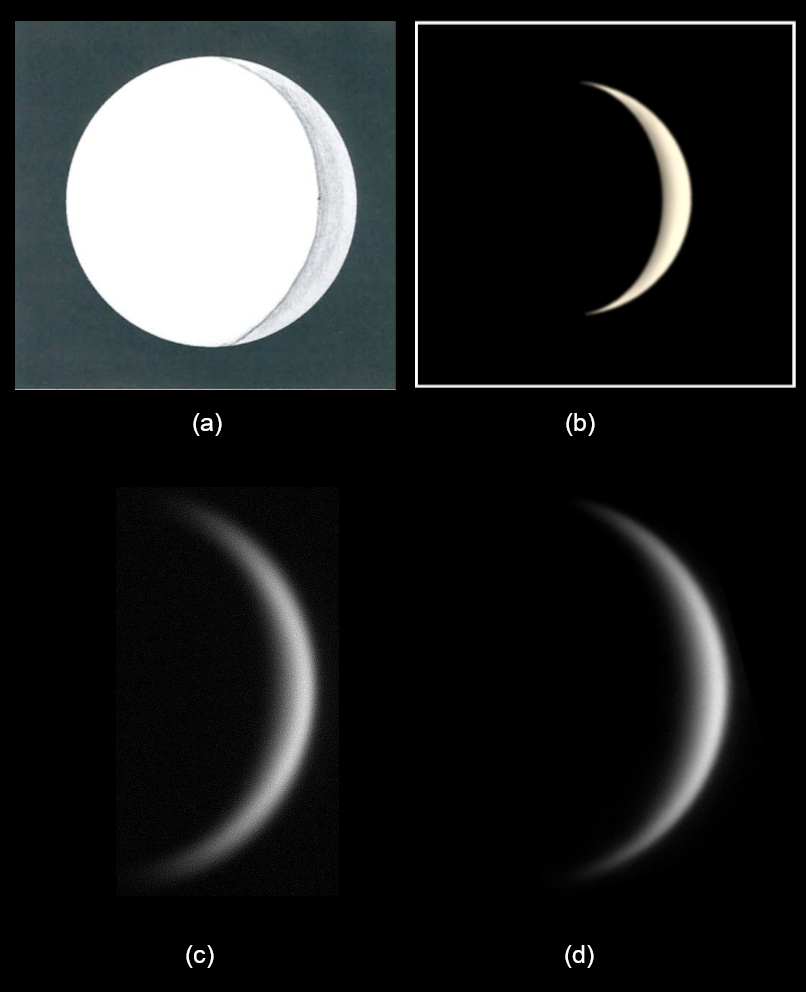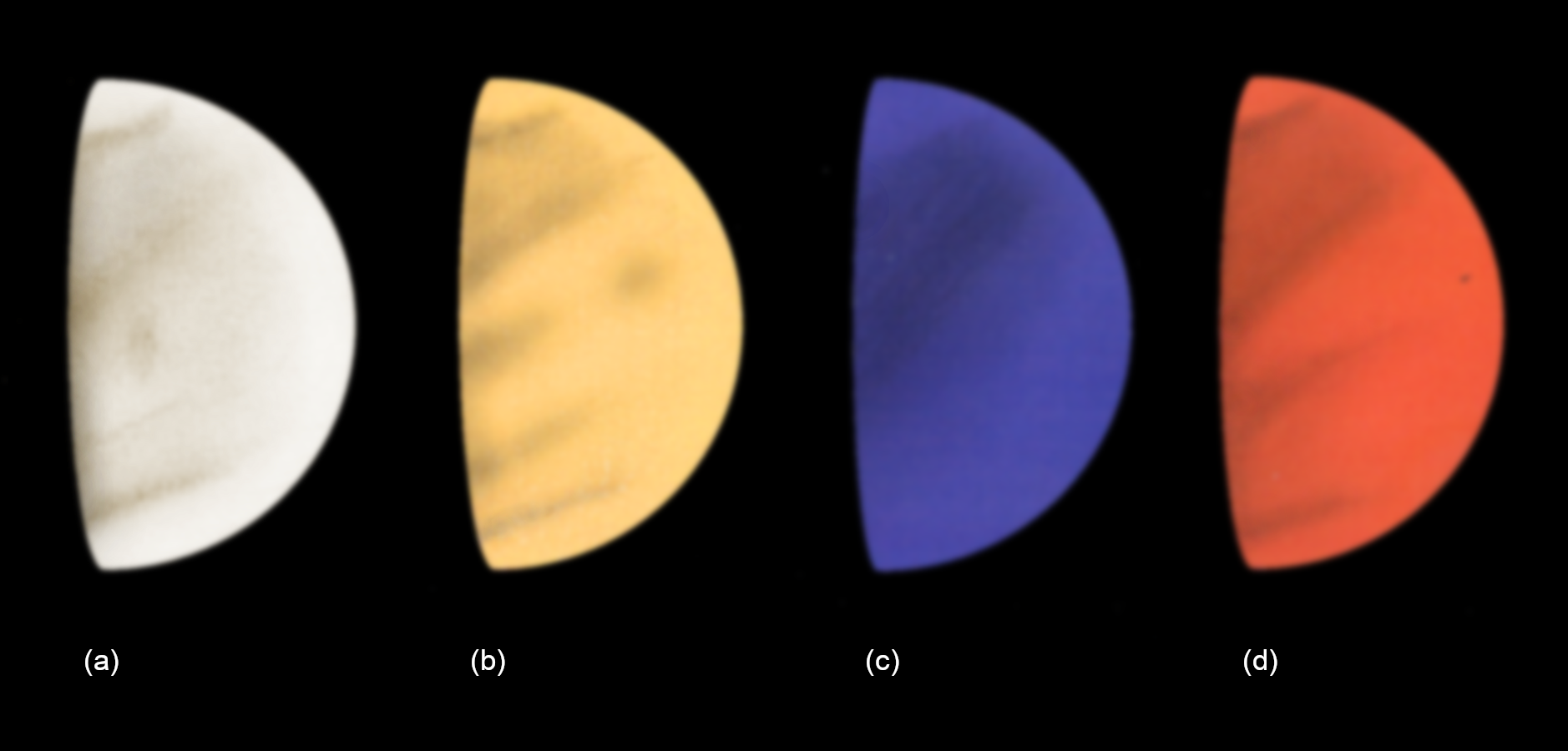The 2020–’21 western elongation of Venus
2022 June 6
A report of the Mercury & Venus Section. Director: P. G. Abel
This paper covers observations of Venus made during the 2020–2021 western elongation. Although the Director only received observations from a limited number of individuals, this was still sufficient to provide a narrative of the various interesting phenomena recorded during this time and allowed an estimation of the date of true dichotomy to be made.
Introduction
The 2020–’21 western elongation commenced on 2020 Jun 3, when the planet entered inferior conjunction with the Sun. This date also marked the end of a splendid eastern elongation, which was covered by two papers published in this Journal.1,2 Venus was found in the morning skies; it proceeded to move away from the Earth, its apparent diameter decreasing and the phase increasing. The planet reached greatest western elongation on 2020 Aug 13,3 and continued to move away from us until Venus reached superior conjunction on 2021 Mar 26.3
It is, alas, usually the case that western elongations receive much less attention from observers than eastern ones. This is probably because observations are generally made in the pre-dawn skies, although this need not always be the case – indeed, the Director makes all his observations of Venus in the daytime sky regardless.
That said, a total of 16 dedicated Section members communicated their observations to the Director on a regular basis, and the names of these observers together with their locations and instrumentation can be found in Table 1. During this elongation, two issues of the Section newsletter Messenger were produced: issues five and six contain many ‘raw’ observations which are not given in this report.4,5 Furthermore, two excellent articles by Manos Kardasis and Nick Haigh can be found in issue five, covering their own analysis of the remarkable wave phenomenon observed during the previous eastern elongation and reported by McKim, Abel & Kardasis (2020).6
The observations from these contributors allowed for a rough estimation of the date of true dichotomy and also provided coverage of some interesting phenomena over the course of the elongation, which are now presented.

(a) 2020 Jun 20, 08:27 UT; 358mm Newtonian, ×225 (Basey).
(b) 2020 Jun 24, 13:26 UT; 305mm Newtonian, ×67 (Abel).
(c) 2020 Jun 24, 08:31 UT; 358mm Newtonian, Baader UV (Basey).
(d) 2020 Jun 24, 15:28 UT; 355mm SCT, F IR 850nm, ASI 224MC (Palgrave).
Cloud formations & prominent markings
Venus once more presented some interesting cloud formations, and these were reported by both visual and digital observers. As the planet passed inferior conjunction, it remained in the crescent stage and during this time (particularly when the crescent is thin), there is little in the way of cloud markings in either drawings or images, as can be seen in Figure 1. Nevertheless, the planet is still quite striking at this phase.
For visual observers, the most common features observed took the form of diagonal streaks, as can be seen in Figures 2 & 3. The use of optical filters allows one to examine the Cytherean atmosphere at different depths, and it is not uncommon for cloud features to change their appearance depending on whether they are being observed in white light or with a particular filter. This useful line of investigation, still being pursued by Section members, was started in the 1970s by previous Director J. Hedley Robinson.

(a) 08:32 UT, integrated light.
(b) 08:41 UT, W15 (yellow).
(c) 08:48 UT, W47 (violet).
(d) 08:55 UT, W21 (orange).
Digital observers were of course able to capture more details, especially when a suitable UV filter was employed. This allowed some rather striking cloud formations to be recorded, as can be seen in Figure 4. These images show the diagonal streaks recorded by visual observers, but also other types of dark shading and cloud markings, along with brighter spots. Some of these details are complex and the observers are to be commended on obtaining sharp images of the planet in UV.
The terminator
This, of course, is the division between the dayside and the nightside of the planet; on Venus it is usually accompanied by dark terminator shading. The terminator can appear somewhat irregular at times – particularly if darker cloud formations or brighter spots are close by – however, it seems that throughout this elongation, it remained geometrically regular.
In the previous elongation, there were a number of observations showing the CTA (cusp terminator anomaly).1 This phenomenon is only visible when the planet is in the crescent stage and does not seem to have been observed during this elongation; it does not appear in any of the images or drawings communicated to the Director.
Dichotomy
Theoretical dichotomy was predicted to occur on 2020 Aug 12. However, one would expect the date of actual dichotomy to be later than this due to the Schröter effect. It seems that dichotomy was indeed late during this elongation, but it is difficult to establish the exact date due to the paucity of observations during this time.
There are, however, a number of useful observations which were communicated to the Director, and this allows for a rough determination to be made. In Figure 5(a)–(d), a selection of drawings made by the Director in integrated light and with various filters all show Venus had a phase of 48% on the date of theoretical dichotomy. In Figure 5(e), a drawing by Adamoli shows Venus exactly at 50% and he estimates this to correspond to the date of dichotomy.
(Login or click above to view the full illustrated article in PDF format)
| The British Astronomical Association supports amateur astronomers around the UK and the rest of the world. Find out more about the BAA or join us. |
